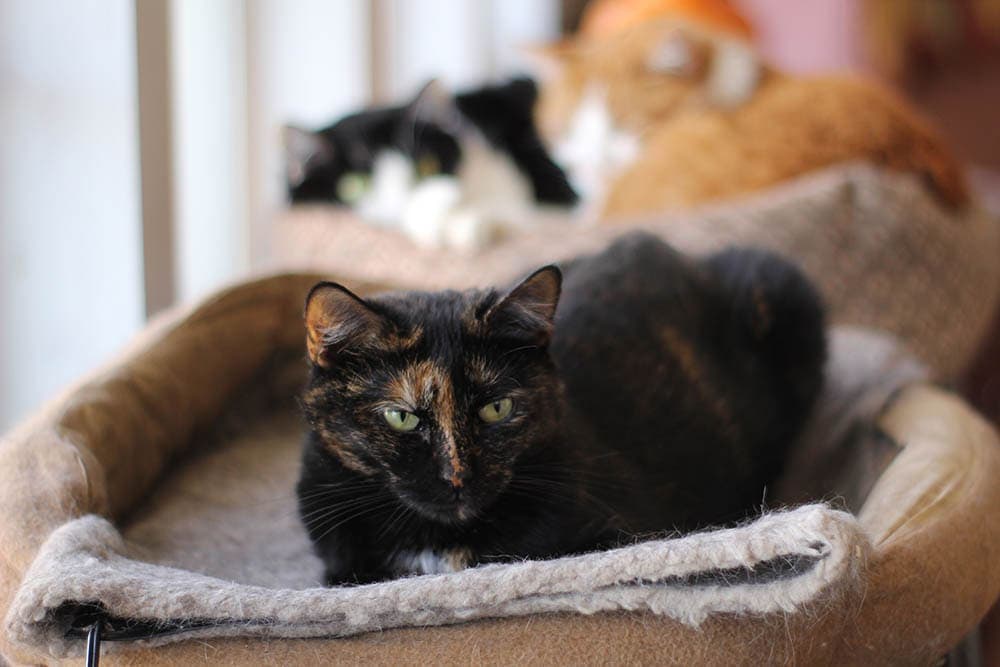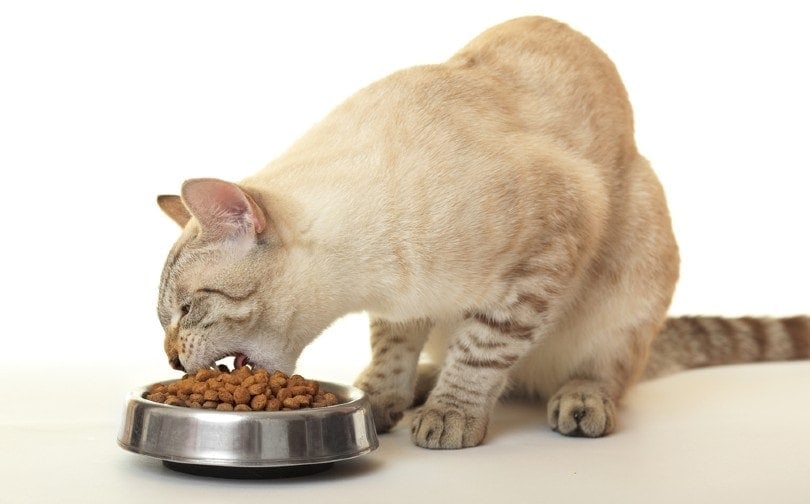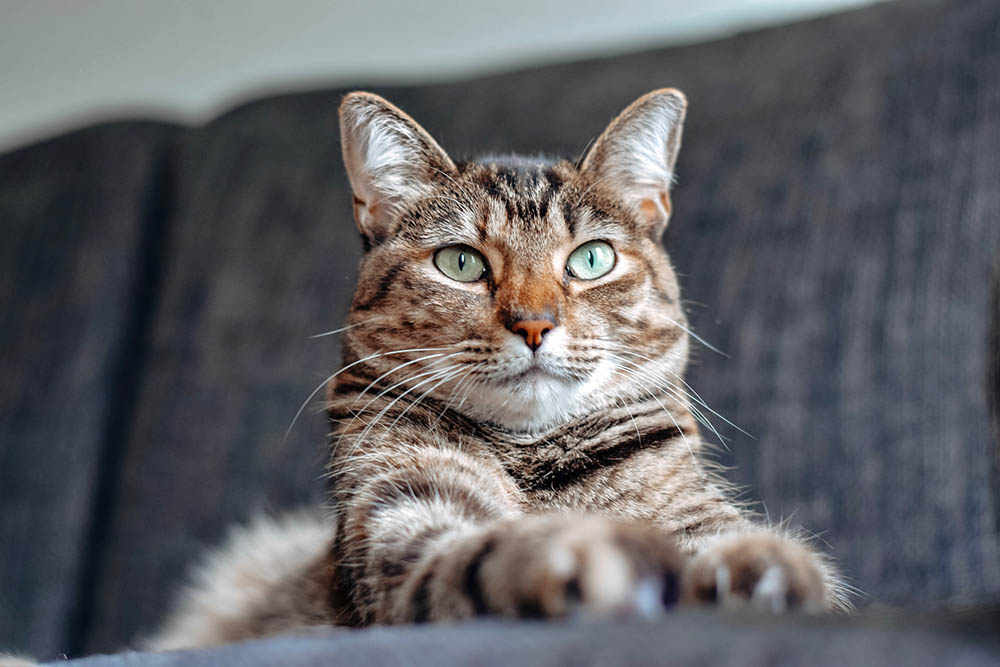How to Tell If a Nursing Cat Is Pregnant Again? Vet-Reviewed Facts & FAQ
By Brooke Bundy
Updated on
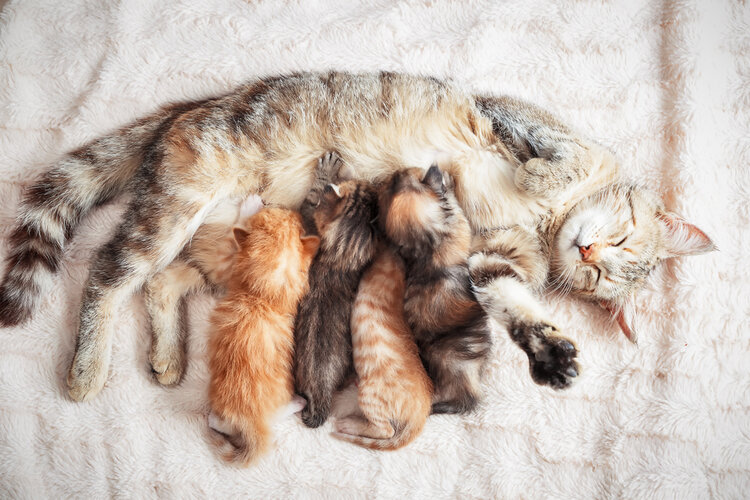
Your cat just brought a litter into the world about a month ago. Even now, her squirming little brood still enjoys their mother’s milk. But maybe you’ve noticed mom is acting a little strange, and you’re worried about the neighborhood tomcats who show up in your backyard wanting to play. As weird as it may seem to us humans, cats can indeed become pregnant again within a few weeks after giving birth—even if they’re still nursing. If your cat sleeps a lot, she could be preparing for another litter. Here’s why, as well more signs of how to tell if your nursing cat is pregnant again.
Why Cats Can Become Pregnant (Again) While Still Nursing
While it’s possible, humans usually don’t become pregnant again while they’re breastfeeding because their hormones temporarily decrease fertility. Nursing doesn’t seem to have the same effect on cats.
When kittens are born, the mother sticks around for almost round-the-clock nursing and grooming. As the young cats reach about 4 weeks old, they’re starting to crawl and gradually become more independent, although they’ll still nurse from their mother for another 3 to 4 weeks. During this window the queen likely won’t stay as close to her growing brood and may go outside again to make more babies.
If you’re shaking your head in confusion, you must remember cats haven’t always been pets, nor are all cats pets today. Felines breed and exist for survival rather than a high quality of life, which is why they go into heat so many times in a year. If you live in a cooler climate, your cat will likely go into heat for 2-3 weeks twice a month, except for the months leading up to the coldest part of the year. Many cats go dormant from October through December as biological protection, since it’s dangerous for young kittens in the wild to be born in a freeze. If you live in a warmer climate, or if your cat stays indoors in a temperate, climate-controlled house, they may go into heat every few weeks year-round.
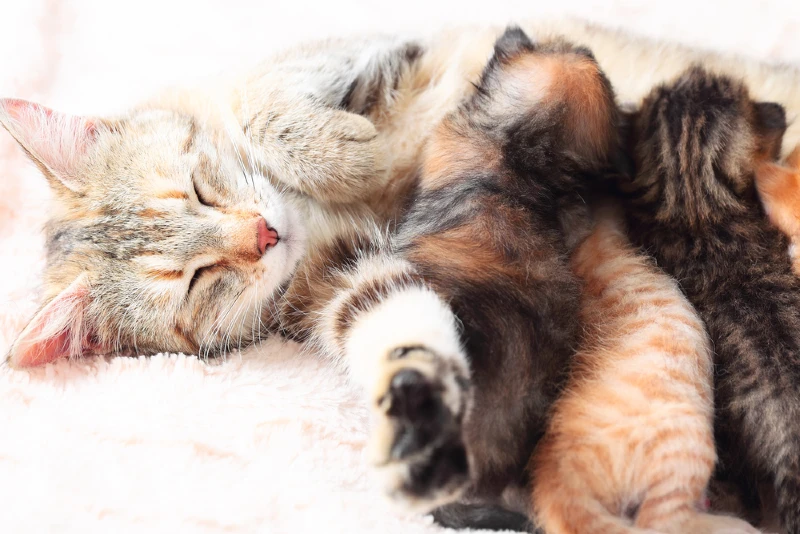
The 7 Signs That Your Nursing Cat Is Pregnant Again
Now that you know it is possible for your cat to be pregnant again, here are a few ways you might be able to tell. However, you should know that these signs won’t necessarily prove that your cat is pregnant, and it can be really hard to guess. Unfortunately, a pregnancy test for cats doesn’t exist yet, and some of the early signs of pregnancy can actually be mistaken for their bodily changes as a result of the last pregnancy. If you want to know for certain, you can take your cat to the vet for an examination and an ultrasound or an X-ray, depending on the stage of the possible pregnancy.
1. Changes in Behavior
Did you notice any peculiar changes in your kitty’s behavior the last time they were pregnant? Some felines become super-snuggly as they prepare for their litter, while others may act anxious or even aggressive.
2. Sleeping More Than Usual
Carrying anywhere from 1 to 12 kittens can certainly be an exhausting task! Queens often sleep or seem lethargic more than usual as they use their energy to grow their babies.
3. Eating More (or Less)
Most queens experience an increase in appetite as they feed their family in and out of the womb, but some pregnant nursing cats may eat less if they experience morning sickness. If you discover your nursing cat vomiting, that could be a sign that she’s pregnant again. However, you should definitely take her to the vet if vomiting does not stop because this could indicate a range of health problems including worms.
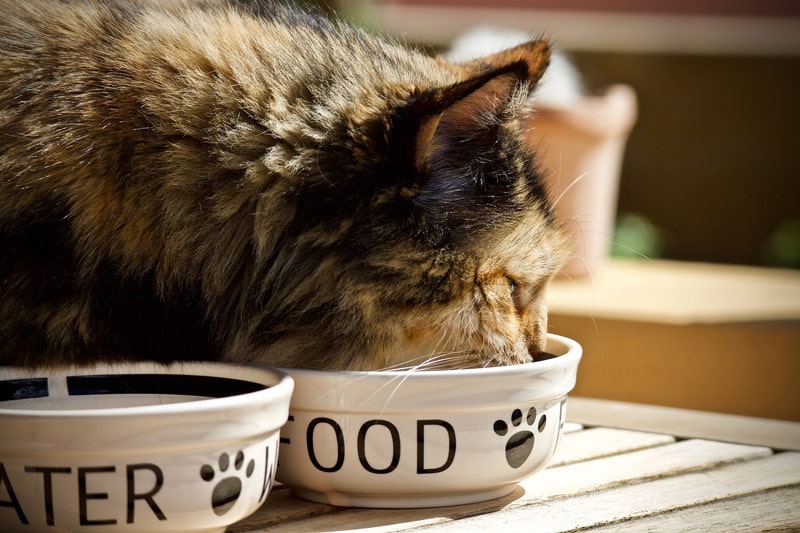
4. Pinking or Swollen Nipples
Cats’ nipples usually swell and turn pink around their second week of pregnancy, and again towards the end of their 65-day gestation period. Since your queen is still nursing, it can be hard to tell if changes in her nipple color is due to her hungry kittens or could be a sign of others on the way. If your cat suddenly stops nursing, appears distressed, or you notice any bruising or unusual colors on her nipples, you should take her to the vet immediately. Mastitis is inflammation of the mammary gland, and it commonly affects nursing cats. Mastitis can be sterile or caused by a bacterial infection, and it prevents your queen from nursing. It can even be life-threatening to her and the kittens. Thankfully, it’s easily treated with warm compresses, hand-milking, pain medication, and antibiotics when necessary.
5. Weight Gain
It’s common for cats to pack on between 2 and 4 extra pounds while they’re pregnant. If you think that your cat’s stomach area is enlarged and it is not related to her most recent pregnancy, you might want to take her to the vet to be checked.
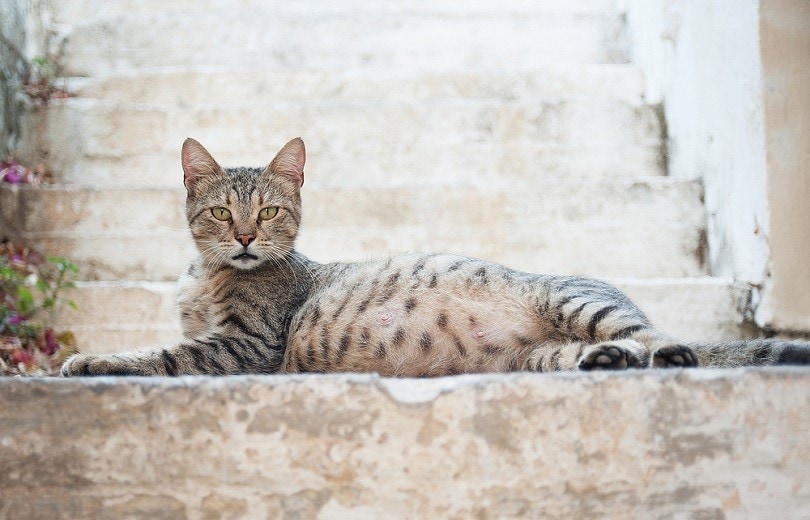
6. Her Heat Cycle Continued and Then Suddenly Stopped
Heat cycles are noisy. If you noticed your queen going back into heat a couple weeks after giving birth, but then suddenly stopped displaying signs within a week of the beginning of her cycle, there’s a good chance she snuck away and became pregnant again. Heat cycles generally last between 2-3 weeks, so an abrupt halt of the cry of heat usually indicates pregnancy.
7. X-Ray or Ultrasound
If you want to know for certain, you can take your queen to the vet for an ultrasound or an X-ray. An ultrasound is generally more helpful since it will show results within two or three weeks after conception and can be used to verify the health of the kittens. On the other hand, an X-ray isn’t accurate to diagnose pregnancy until after about 42 days, and it does not provide the information about kitten health that an ultrasound does.
Conclusion
Kittens can bring joy. They can also bring stress, however, especially if you weren’t prepared for another litter. If you’re not looking to bring more kittens into the world, keep your queen indoors after she gives birth until it’s safe to have her spayed. Unfortunately, the procedure stops her milk supply, so you want to wait until she’s finished nursing, or about 6 to 8 weeks after delivery. If you believe your queen is pregnant with round two, you can take her to the vet to confirm. From there, you can decide whether you want to schedule her spay then or wait until after the next kittens are born and weaned.
See Also:
- Can Cats Breastfeed After Being Spayed? Vet Approved Advice
- When Do Cats Go Into Heat After Giving Birth? Our Vet Explains
Featured Image Credit: Rashid Valitov, Shutterstock



